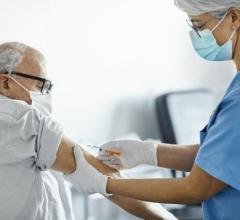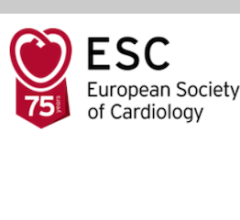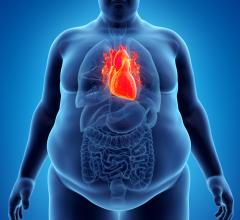
May 28, 2024 — Yoga focused on breathing, meditation, and relaxation is linked with symptom improvement in patients with heart failure, according to research presented at Heart Failure 2024, a scientific congress of the European Society of Cardiology (ESC).1
“Patients who practiced yoga on top of taking their medications felt better, were able to do more, and had stronger hearts than those who only took drugs for their heart failure,” said study author Dr. Ajit Singh of the Indian Council of Medical Research (ICMR), Manipal Academy of Higher Education, India. “The findings suggest that yoga can be a beneficial complementary therapy in patients with heart failure.”
Heart Failure affects vast numbers of people – more than 64 million globally2 – and can have devastating impacts on quality of life, with patients feeling tired and breathless, and being unable to participate in their usual activities. While previous studies have shown the short-term benefits of yoga in patients with heart failure,3,4 this study provides new information about the long-term effects.
The study enrolled patients aged 30 to 70 years with heart failure from the cardiology outpatient department of Kasturba Hospital in Manipal, India. All participants had undergone a cardiac procedure within the past six months to one year and were taking guideline-recommended heart failure medications. Patients with severe symptoms were excluded.5
The study included 85 patients. The average age was 49 years and 70 (82%) were men. In a non-randomized fashion, 40 patients were assigned to the yoga group and 45 patients were allocated to the control group. All participants continued taking guideline-recommended heart failure medications throughout the study.
Experienced faculty in the hospital’s Department of Yoga demonstrated pranayama (yogic breathwork), meditation, and relaxation techniques to patients in the yoga group.6 Participants were supervised for one week and then advised to continue self-administered yoga at home once a week for 50 minutes. Patients spoke to an instructor after each home session to check progress.
At baseline, six months, and one year, the researchers assessed heart structure and function in the yoga and control groups using echocardiography. The measurements included the ability of the heart to pump blood (left ventricular ejection fraction), and assessment of right ventricular function. The researchers also examined blood pressure, heart rate, body weight, and body mass index. Symptom burden and the ability to do ordinary activities such as walking and climbing stairs were assessed using the New York Heart Association classification system.
Compared to the control group, the yoga group demonstrated significantly greater improvements in all measurements at six months and one year relative to baseline.
Dr. Singh said: “Patients who did yoga had healthier hearts and were more able to carry out ordinary activities such as walking and climbing stairs than those who only took medications. Patients with heart failure should speak to their doctor before starting yoga and should then receive training from an experienced instructor. Prescribed medications should be continued as before. Yoga may be unsuitable for heart failure patients with severe symptoms, who were excluded from our study.”
For more information: www.escardio.org
Find more ESC24 conference coverage here
References and notes
1The abstract ‘Impact of yoga therapy on long-term outcomes in heart failure patients using functional and echocardiographic parameters’ will be presented during the session ‘Chronic heart failure - treatment 16’ which takes place on 12 May 2024 at 16:00 WEST at Moderated ePosters 2.
2Savarese G, Becher PM, Lund LH, et al. Global burden of heart failure: a comprehensive and updated review of epidemiology. Cardiovasc Res. 2023;118(17):3272-3287.
3Pullen PR, Thompson WR, Benardot D, et al. Benefits of yoga for African American heart failure patients. Med Sci Sports Exerc. 2010;42(4):651–657.
4Pullen PR, Nagamia SH, Mehta PK, et al. Effects of yoga on inflammation and exercise capacity in patients with chronic heart failure. J Card Fail. 2008;14(5):407–413.
5The study enrolled patients with New York Heart Classification III or less. Those with class IV were excluded.
6Instructions were given on pranayama techniques, including: 1) ujjayi pranayama (5 minutes), which involves breathing with both nostrils and is sometimes called “ocean breath”; 2) anuloma viloma pranayama (5 minutes), meaning alternate breathing with each nostril; 3) shitali pranayama (5 minutes), which involves inhaling through a curled tongue and exhaling through the nose; 4) sitkari pranayama (5 minutes), which involves breathing through the mouth with a hissing sound; and 5) bhramari pranayama (5 minutes), a humming breath practice known as “bee breath”. After the pranayama techniques, participants were asked to do soham meditation (10 minutes) involving repetition of the word “ohm”. Finally, participants performed shavasana, also called “corpse pose”, in the supine position. Shavasana-1 (5 minutes) involved focusing on the breathing movement, and was followed by shavasana-2 (10 minutes), in which participants relaxed their body part by part.


 August 29, 2025
August 29, 2025 









